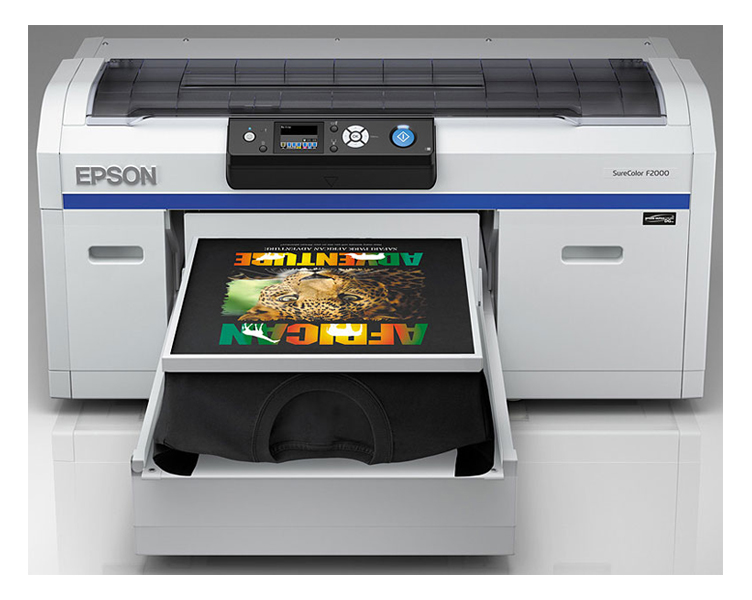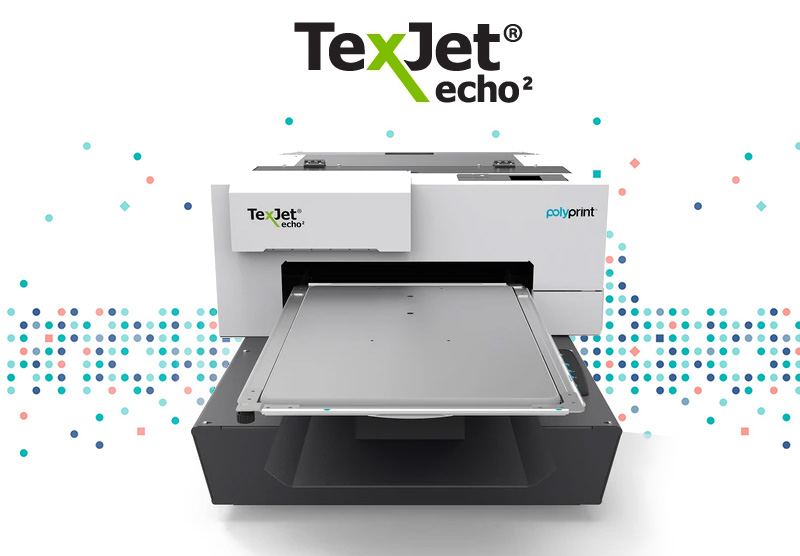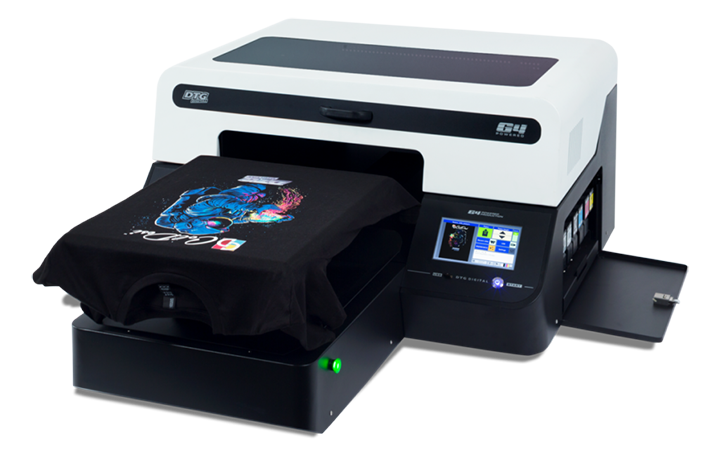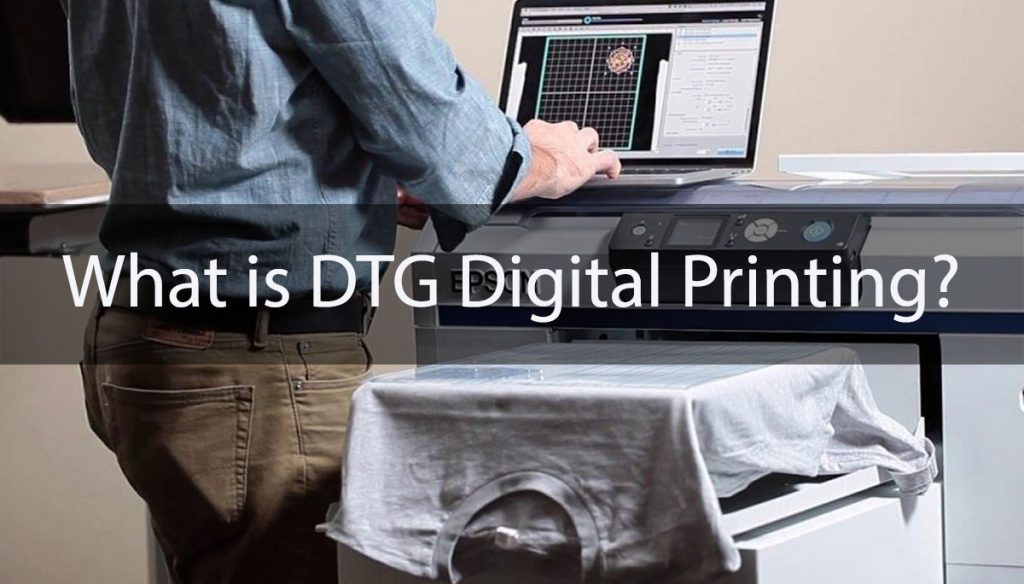
If you’re not familiar with the term, direct to garment digital printing is a process of printing on fabric using a digital printer.
The fabric is placed on a special printer bed, and the ink is applied directly to the fabric.
This allows for much greater flexibility in terms of design and colour selection than traditional screen printing techniques.
Almost everything in the world is now digitised, which makes sense because most things can be printed on a computer.
What Is Direct To Garment Printing?
Direct to garment printing, also known as DTG printing, is a process of printing on textiles using inkjet technology.
The printer uses water-based inks, which are absorbed by the fibres of the garment. This makes the print resistant to fading and enables direct printing on a wide range of fabric types.
DTG printing is a great option for small businesses and start-ups because it doesn’t require the use of traditional printing equipment or screens.
This means that you can print your designs on demand, without having to order large quantities in advance.
DTG printing is also ideal for complex designs that would be difficult to reproduce using traditional screen printing methods. The print quality is extremely high, making it perfect for photos and detailed graphics.
How Does Direct To Garment Printing Work?
DTG printing, or direct to garment printing, is a process of printing digital images directly onto fabric. The fabric is placed on a specially-designed printer, and the image is printed using special inkjet cartridges.
DTG printers are similar to standard inkjet printers, but they have been adapted to print on fabric.
The advantage of DTG printing is that it allows for very high-quality prints, and the ink is absorbed into the fabric so it feels just like a regular garment. This makes it ideal for printing complex designs or photos onto clothing.
The downside of DTG printing is that it can be quite slow, and it is not suitable for large batches of garments. It is also more expensive than other methods of printing, such as screen printing.

Pros And Cons Of Direct To Garment Printing
Direct to garment printing, also known as DTG printing, is a process of printing on textiles using specialised inkjet technology.
DTG printing offers a number of advantages over traditional methods of textile printing – including a softer feel – however, DTG printing also has some drawbacks. Lets find out..
Pro’s
- Softer Feel: The ink used in DTG printing penetrates the fibres of the fabric, resulting in a softer feel.
- More Range of Colours: DTG printing produces a wider range of colours than traditional screen printing.
- No Minimum Order: There is no minimum order requirement for DTG printing, so even a single garment can be printed.
Con’s
- Higher Cost Per Garment for larger quantities: The ink is also more expensive than traditional screen printing inks.
- Spot Colours: DTG printing uses water based inks and spot colours are less vibrant then screen printing.
- Limited Garment Availability: Not all garment styles are available in DTG printing, so you may have to compromise on your desired style or fabric.
Who Should Use Direct to Garment Printing?
DTG is a type of digital printing, which means that the image is printed directly from a computer onto the fabric.
This method is often used for small orders, and because it does not require a specialised printer, it is a more affordable option than other methods.
DTG is ideal for printing on garments that are made of natural fibres such as cotton and linen. The ink used in DTG printing is water-based, which means it will not damage or discolour the fabric.
This makes DTG an excellent choice for printing on delicate fabrics such as silk.

Where Can You Find A Direct to Garment Printer?
If you are looking for a Direct to Garment Printer, your best bet is to search online. There are a number of different retailers that sell these printers, and you can likely find one that fits your needs and budget.
Keep in mind that these printers can be expensive, so be sure to do your research before making a purchase. You can also check with your local print shop to see if they offer this type of printing.
Epson Surecolor Range: SC-F2000 | SC-F2160 | SC-F3000
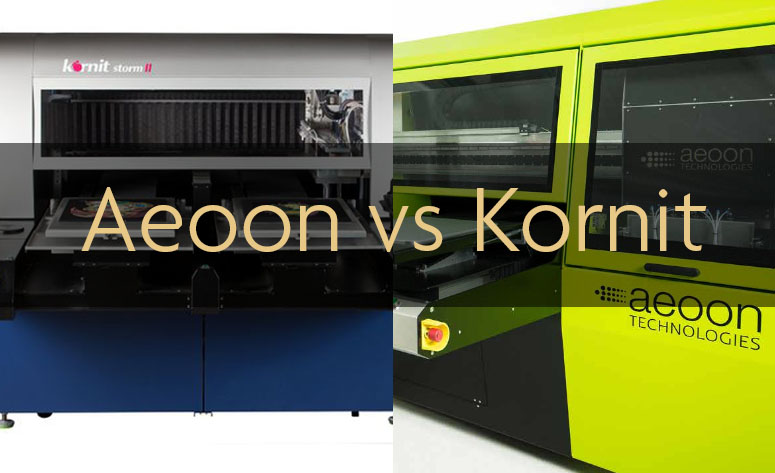
What Is The Best DTG Machine?
In the world of DTG printing, there are a wide variety of companies offering a range of products. Aeoon and Kornit are two such companies.
Both are titans in the industry. Both companies offer high quality industrial grade printers that are capable of 24 hour-7 days week production schedule.
Which is the best DTG machine?
FAQ’s For DTG Printing
There are a lot of questions people have about DTG printing process. here are just a few of the main query’s.
What is the difference between DTG and traditional printing?
DTG printing is a digital printing technology that prints directly onto fabric using specialty inks.
DTG printers use heat to fuse the ink with the fibres of the fabric, resulting in high-quality prints that are durable and long-lasting.
Traditional printing methods involve transferring an image to a substrate (paper, canvas, etc.) using either a printer or screen printing process.
Can I print any image with a DTG printer?
Yes, you can print any image with a DTG printer, providing that the image is in a digital format, high quality and sized correctly.
Conclusion
DTG printing is a digital printing technology that prints directly onto fabric using specialty inks.
DTG printers use heat to fuse the ink with the fibers of the fabric, resulting in high-quality prints that are durable and long-lasting.
Because DTG printers do not require a specialised printer, they are a more affordable option than other methods.
